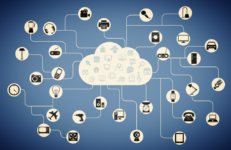The internet of things (IoT) is the term used to describe the increasing network of physical objects such as appliances, printers, security systems, and more that utilize internet connectivity and an IP address to communicate with other systems and devices.
What was once merely a novel convenience has begun to permeate every aspect of people’s daily lives. Home information and entertainment systems like Alexa, smart thermostats, and pet cams that allow people to talk to their pet while they are away from home have created a population that not only accepts the technology, but one which is beginning to expect it in all areas. When properly utilized, the potential for businesses is virtually unlimited.
Data Driven Decisions
The IoT has given businesses unprecedented access to massive amounts of personal information that can be used in a multitude of ways. Depending on the devices being used, companies now have access to health information, entertainment preferences, the amount of time people are at home, how long they sleep, and how productive they are at work. The biggest problem currently is understanding exactly how to leverage this data.
The amounts of information are so massive, it has been difficult to determine what is and isn’t valuable for market research purposes. IoT data visualization allows companies to access data in a way that is more manageable.
Inventory Management
Inventory management is one of the easiest ways to implement the data businesses can access in the retail and manufacturing industries. It has the potential to save substantial amounts of money in the logistics of ordering and tracking shipments. Network connected monitoring of temperature and humidity allow remote analysts to monitor the conditions of food transportation to address fluctuations immediately and prevent spoilage.
Many businesses are switching to fully digital inventory management. This allows the purchasing department to be notified when stock is running low so that shelves are never empty of popular items. This allows workers to focus on more important tasks and makes the entire system more time and cost efficient.
Evolving Business Models
Throughout history, business has remained basically the same. People were either selling information, services, or goods. While this is still true, the ability to store and sell information on consumers will become more prominent in the coming years for those who are willing to leverage it.
Consumers expect to have their preferences targeted and are beginning to appreciate sales copy and services which are presented to them based on what they do and don’t like. Companies with access to this information will be able to do this more effectively and enjoy greater success.
As more information is accumulated and stored on the internet about user preferences from their online activities and the data gathered from their IoT devices, marketing will truly move into the information age. Businesses who fail to take advantage of this wealth of knowledge and insight into their target consumer base will inevitably begin to fall behind in sales. By investing in optimizing the technology now, companies have a remarkable opportunity to grow their business.








